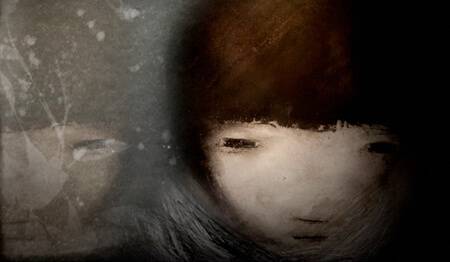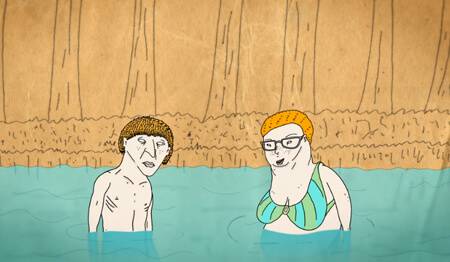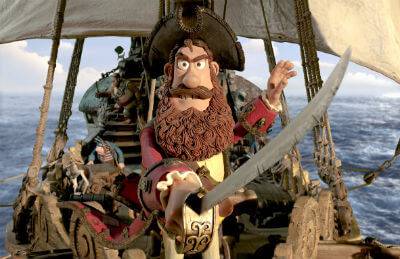Encounters 2013 Part 4 – Masterclasses & More
This year was my first time at Encounters and I wasn’t disappointed; Bristol is a wonderful city and is well suited to the annual film and animation festival. Joined by the rest of the Skwigly team I was able to chat to some of the animation community’s most distinguished figures and was fortunate enough to be present at several events focusing on the artistry of film making.
The first talk was Animation Cinematography in the Digital Age, an in-depth discussion about the relation between stop-motion animation, cinematography and the advances in digital equipment and media. The talk was lead by Tristan Oliver, lead cinematographer on Fantastic Mr Fox and ParaNorman. He was joined by Frank Passingham who has worked in lighting and as a DOP since the 1980s alongside Bolex Brothers and more recently with Aardman on The Pirates! Also joining the discussion was Chris Maris, whose most recent work was on the TV drama series Chernobyl having worked as a DP on everything from shorts and music videos to documentaries and feature films. The panel discussed how working practice has changed throughout the production of film making, particular attention being paid to the changeover from film to digital cameras and the application of such equipment in the construction of stop-motion film. Major improvements in this area have included the reduction in camera size, making it easier for the cinematographer to achieve what they want in the scene whilst allowing the animator to work without the abilities of a contortionist. The talk was like sitting in on three old friends discussing their careers, changes in industry, their opinions on equipment and working relationships with directors and animators.
Bristolion and Encounters advocate Peter Lord offered up his time and unique insight into both the history of Aardman and the discipline of making a feature length animated film. Lord began by introducing the crowd to the original Aard-Man skit which led to them later selling their first film to the BBC. He later went into the strategy behind gaining funding, as well as the development of a story, from storyboard to animatic to finally directing a film whilst organising a full team of hugely talented artists. The audience was treated to a unique overview of the production on The Pirates! and the studio’s method of moving through the development of narrative to creating the final film. It was the importance of narrative that filmmakers in the audience were particularly urged to consider when embarking on film making – everything comes second to the story.
-Laura-Beth Cowley
The two remaining animated short film competition screenings proved to be an interesting pair. Ani6: Power, Truth and Beauty was, for the most part, strangely lacking in all three departments. Certainly traces of deep and emotive storytelling were evident on occasion, but rarely paired with sincerity or compelling visuals. Granted the titles ascribed to these groupings are likely not meant to be taken at face value (oh, literal me), and a handful did rise above the not-particularly-engaging majority. Because I’m A Girl (Raj Yagnik), one of a series of commissioned films for Plan had a clear message, delivered well without miring itself in pretension; A loose variation of pixilation, it communicates the urgent need for gender equality in Malawi through a series of sequential photographs. Similarly executed is Paul Bush’s Lay Bare, whose deeper meaning is more abstract but clearly defined enough through photographs of the minutiae of human anatomy, compiled together to create a ‘composite portrait’ of the body in multiple states.

“My Little Underground” (Elise Simard)
In visual terms, Elise Simard‘s NFB short My Little Underground scored high points though the animation itself came across far stronger than the experimental, live-action processes the film indulged. Another visual hit was Adam Wells‘s CGI offering Risehigh which came in at a staggering 19 minutes. As with his previous short Brave New Old, the film showcases a series of shoebox diorama-esque tableaux, this time set inside a tower block we as the audience perpetually ascend, gleaning insights into its residents’ highly-stylised ennui. It’s Theodore Ushev‘s fabulous Gloria Victoria (another NFB entry) that ultimately manages to make the top spot, combining art, music, history and animation in a manner that demands multiple viewings; Look out for this one when it comes online, folks.
Going out with a bang rather than a whimper, Ani7: Transitions fires on pretty much all cylinders with some truly impressive work on display. Beginning with Michelle and Uri Kranot’s Hollow Land in which a refugee couple seek sanctuary in an environment that soon proves less favourable than their prior circumstances. The film, boasting gorgeous puppet craftmanship and a judiciously timed 2D animation sequence, does a fine job of snapping the possibly-flagging festivalgoers awake again.

“Le Courant Faible de la Rivière” (Joël Vaudreuil)
Joël Vaudreuil’s Le Courant Faible de la Rivière (The River’s Lazy Flow) was a highlight of this year’s Annecy when presented in the original French (with English subtitles). This screening offers up the English dubbed version, which takes away a small component of its charm – the alternate, English-speaking performances don’t carry the same deadpan French cadence that so accentuated its quiet, dry wit. It’s an issue that I recall the English-dubbed version of Persepolis also suffered from. Call me a snotty little film douche but sometimes subtitles just work better. At any rate, it remains a lovely little reminiscence on youthful folly and telekinetic piscicide. Just for the record, I had to look up ‘piscicide’ just then; ‘Fishicide’ didn’t seem quite right written down. Films I engaged with more on a personal level included Carla MacKinnon‘s Devil In The Room, a haunting semi-documentary on sleep paralysis and hypnopompic hallucinations, as well as Moritz Schneider’s Harald, a simple comedy that makes me wonder why more simple comedies weren’t thrown in the mix overall. Other visual treats came in the form of Cedric Louis’s Un Enfant Commode (A Convenient Child), Kurent by Luka Bajt (whose other film Ancient shows up in the festival’s South West Showcase) and Anete Melece‘s The Kiosk, a sweet tale of a woman adapting, after a brief struggle, to her lot in life.
-Ben Mitchell
Look out for the fifth and final part of our Encounters Festival coverage later this week.


